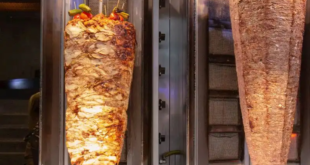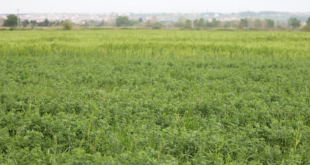In a sense, regenerative agriculture is more than sustainable — it allows for continued growth, something modern farming can’t claim. The key principles include no-till planting, crop rotation and rotational grazing. Each practice heals the Earth and provides food for the expanding population.
Problems with modern agriculture
Farming didn’t always look like this. Over the past century, agriculture has changed dramatically to involve mechanical plowing, monocropping, genetic modification, concentrated animal feeding operations and widespread pesticide use. These practices have benefitted many people, but they’re also unsustainable.

Plowing leads to erosion and disturbs the microorganisms that make the soil fertile. Pesticides and fertilizers often make their way into groundwater. Overgrazing and clearing land for farming in Africa contribute to land degradation and desertification. For example, 65 percent of livestock in Eastern Africa graze on degraded grasslands.
Thankfully, it doesn’t have to be this way. A growing number of people are going back to their roots and practicing regenerative agriculture.
Sustainable agriculture methods
At the heart of regenerative agriculture is the idea that everything is connected. Rather than being detached from the surrounding environment, farms contain complex ecosystems that support growing food without damaging the planet. Key practices include:
No-till farming
Traditional agriculture involves plowing the soil to plant seeds. This practice leads to erosion because roots no longer anchor the soil. Africa now suffers from frequent droughts due to climate change, so erosion can be catastrophic, stripping away precious nutrients from the earth and making it harder to plant seeds next season.

No-till agriculture is the sustainable practice of leaving last season’s crops in place after they die. The intact root systems hold down the soil until it’s time to plant again. No-till farming also saves time, prevents weed seeds from germinating in the soil, lowers the cost of planting and allows microbes to flourish in the ground. Farmers plant seeds with machinery that punches holes in the soil rather than uprooting surrounding plants.
Crop rotation
Continually planting the same species of plants in the same spot leads to soil degradation because each type of plant requires specific nutrients. For example, clover needs large amounts of potassium and phosphorus, so planting it yearly in the same field could lead to the soil lacking these two elements over time.

At the same time, some plants add large amounts of nitrogen to the soil. For example, green beans, peanuts and alfalfa restore depleted nitrogen in the ground.
Crop rotation takes advantage of plants’ ability to add or deplete nutrients by planting different crops yearly. Farmers can utilize crops that complement each other, such as planting clover to improve nitrogen and corn that needs it. Many farmers also let fields go fallow between planting to restore the soil.
Rotational grazing
Letting livestock perpetually graze in the same spot often leads to bare, depleted soil, although it differs depending on which animals are feeding. One study found continuous sheep grazing in South Africa — where less than 2 percent of grassland is protected — had the worst effect, while cattle had a lower impact on the land. Regardless of species, overgrazing usually occurs when animals are overstocked in a confined space.

Farmers must supplement their animals’ diet with feed when the grass is eaten down. It’s in their best interest to rotate livestock throughout different pastures.
For example, farmers can keep their cattle in one pasture for a few months until the grass is relatively short. Then, they herd the animals through a gate into an adjacent field to spend the next few months. The grass in the first field recovers until the next season when the cattle graze it again.
Rotational grazing is one of the most sustainable methods of feeding livestock. It’s also cheaper for farmers than using supplemental feed.
Renewing regenerative agriculture
Regenerative agriculture is the most sustainable form of farming. It restores depleted soil and grasses while growing food, proving that human development can coexist in harmony with nature. People must return to the type of farming that used to be so widespread to sustain the growing population without harming the planet.

By Jane Marsh, May, 2023
Jane Marsh is the Founder and Editor-in-Chief of Environment.co. She covers topics related to sustainability, agriculture and food policy.
Source: www.agrilinks.org
 THE GLOBAL WINDOW OF TURKISH FOOD AND AGRICULTURE The Global Window of Turkish Food and Agriculture Sector
THE GLOBAL WINDOW OF TURKISH FOOD AND AGRICULTURE The Global Window of Turkish Food and Agriculture Sector









